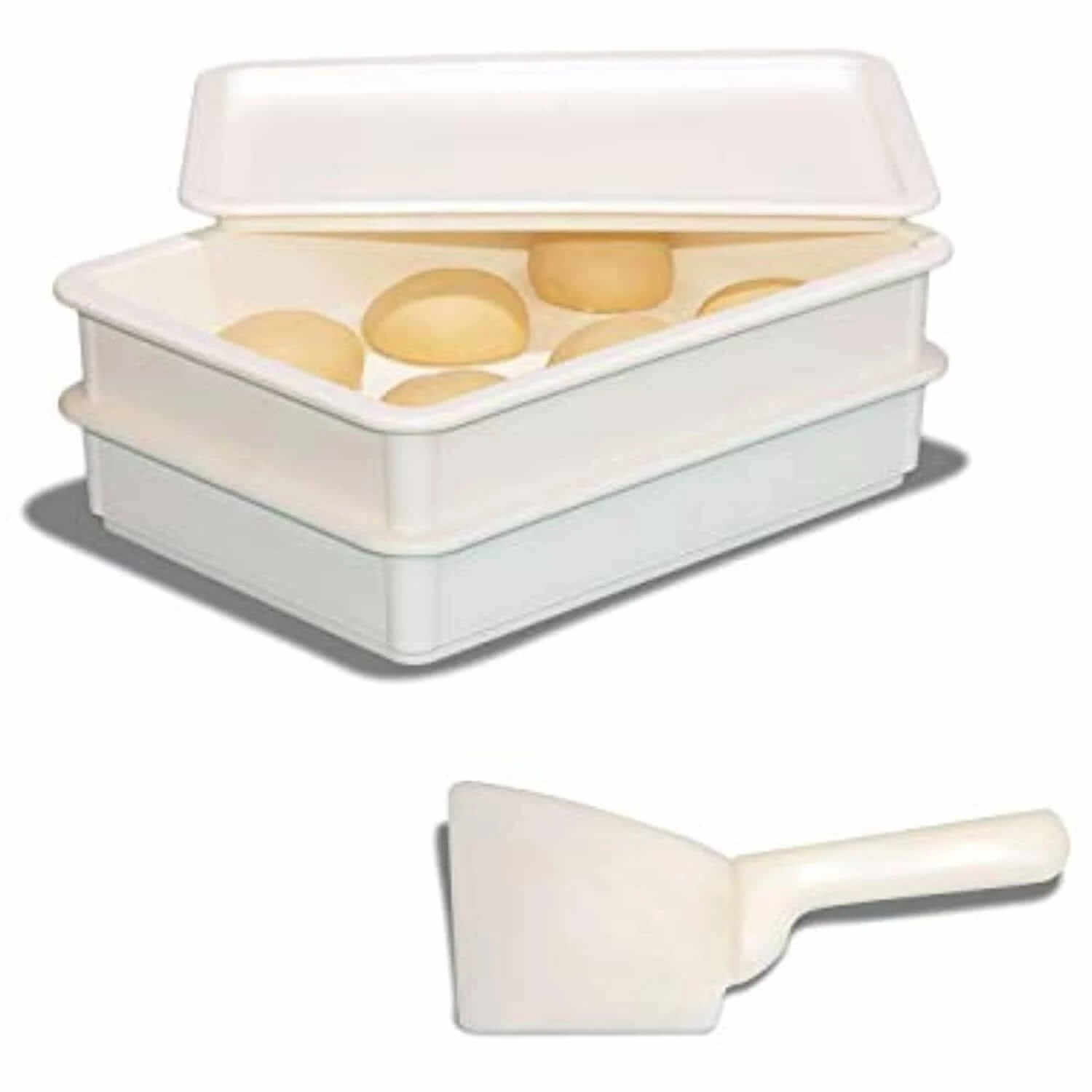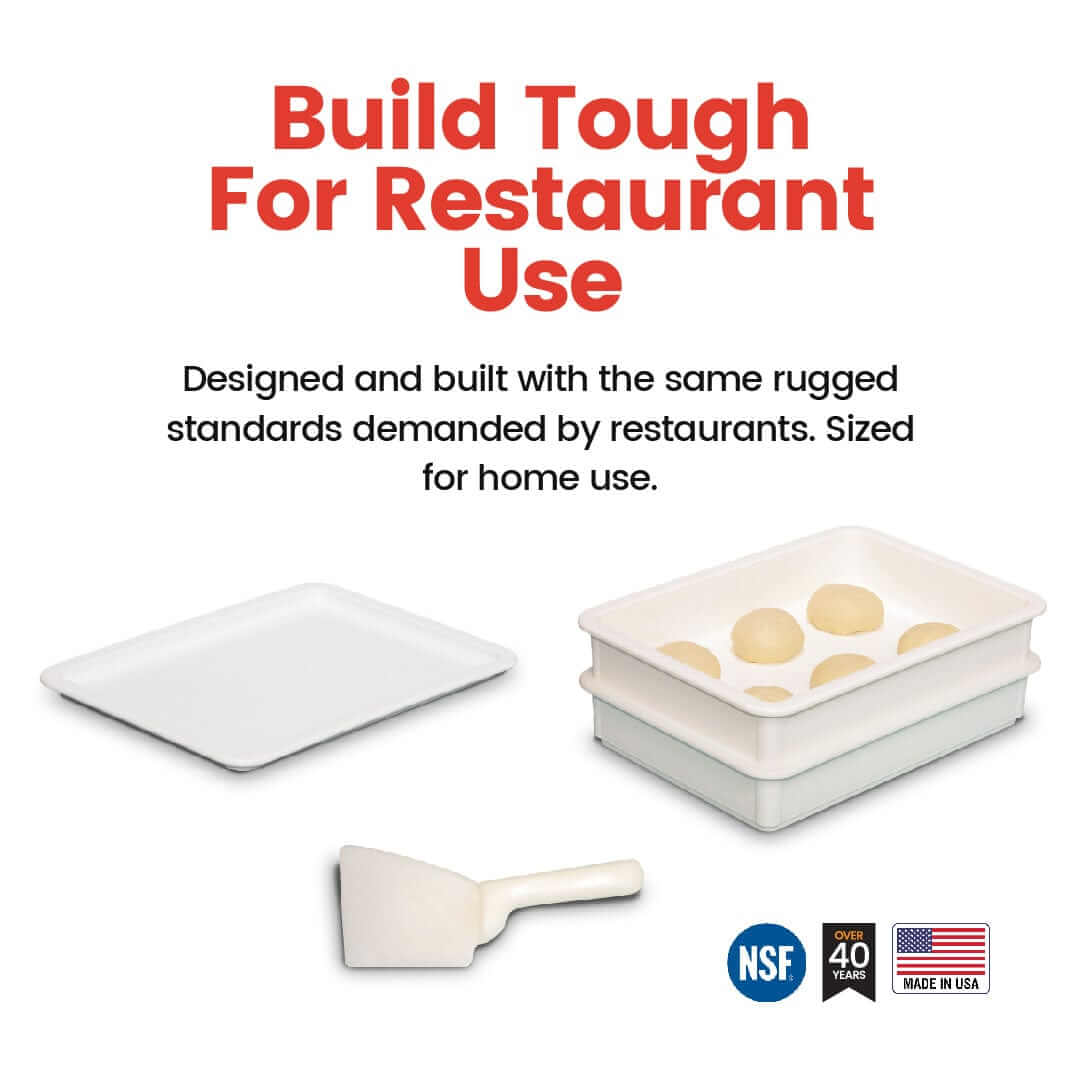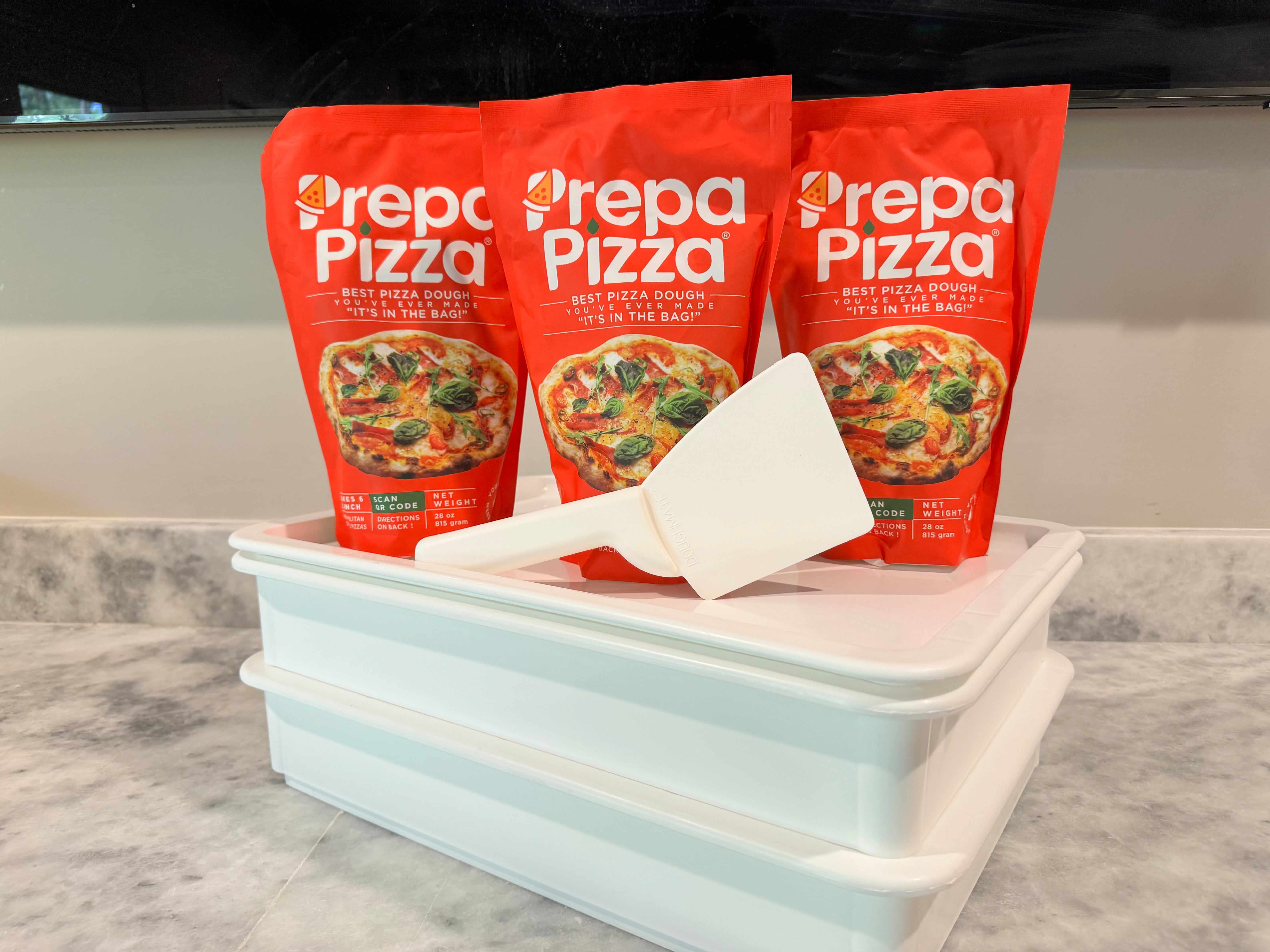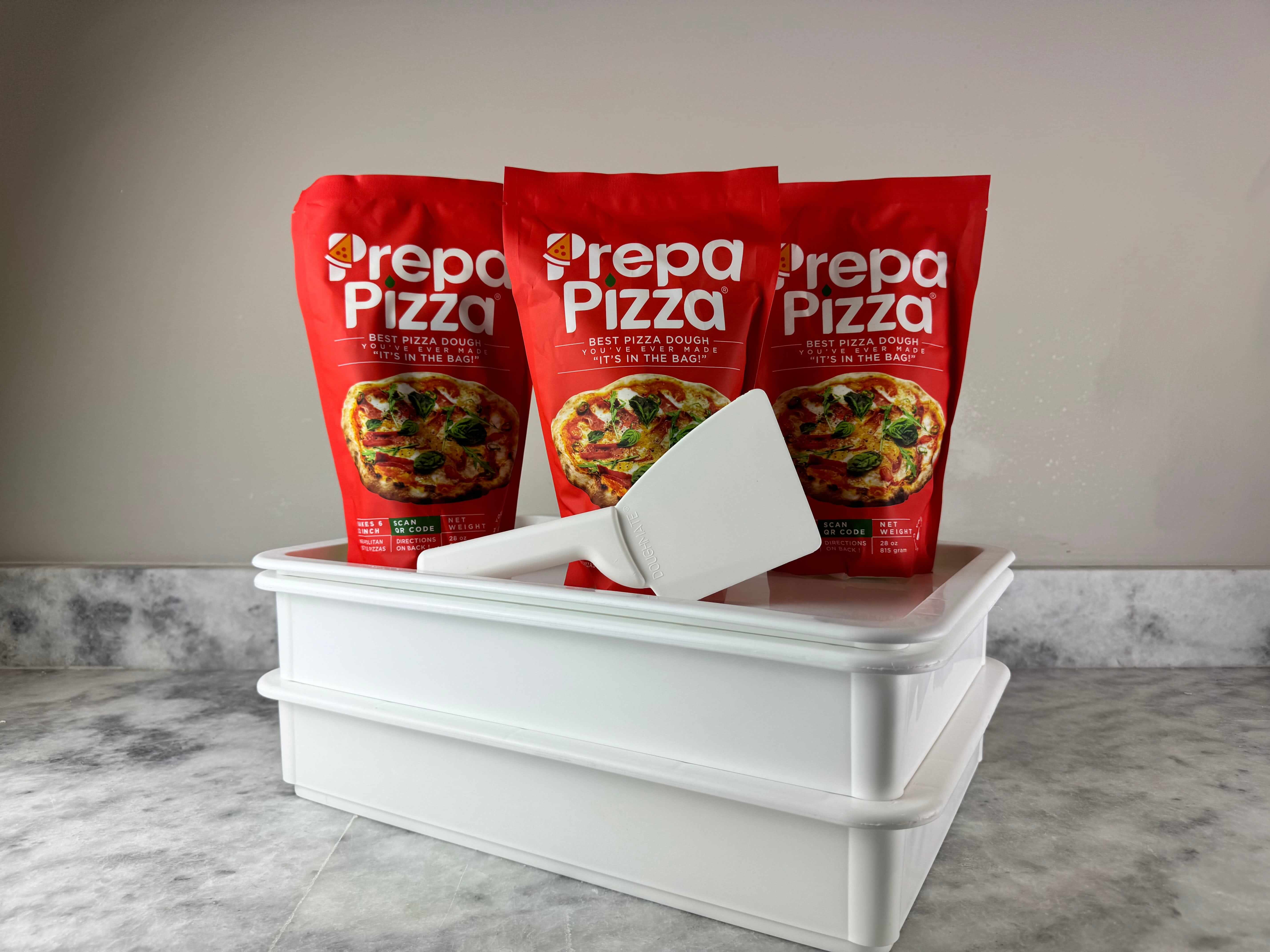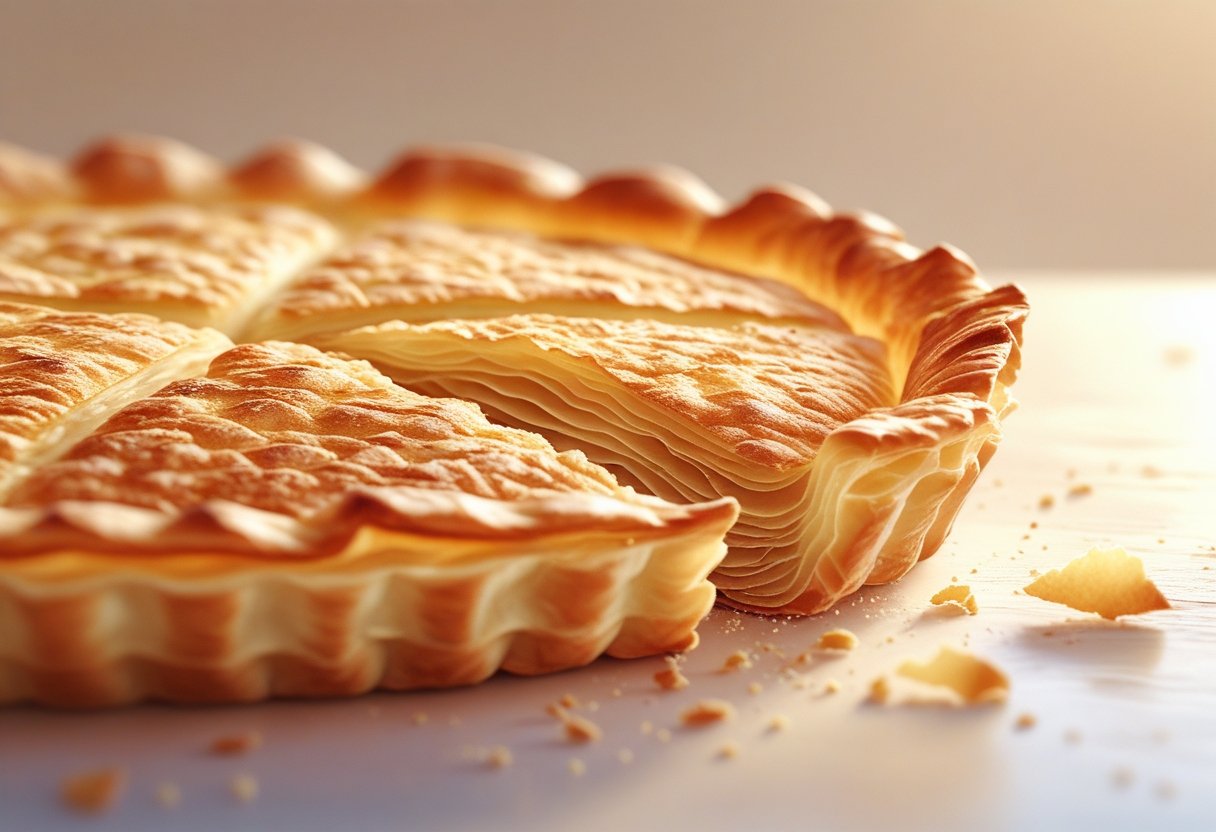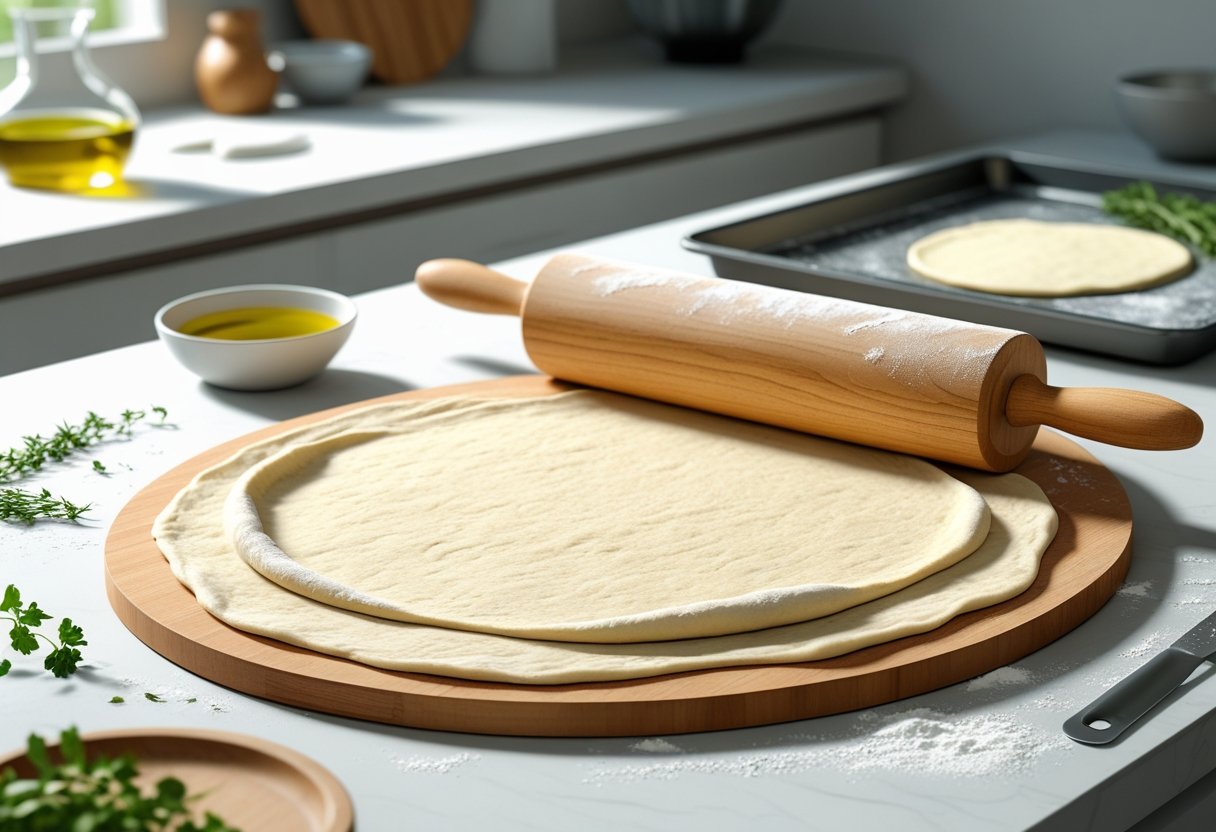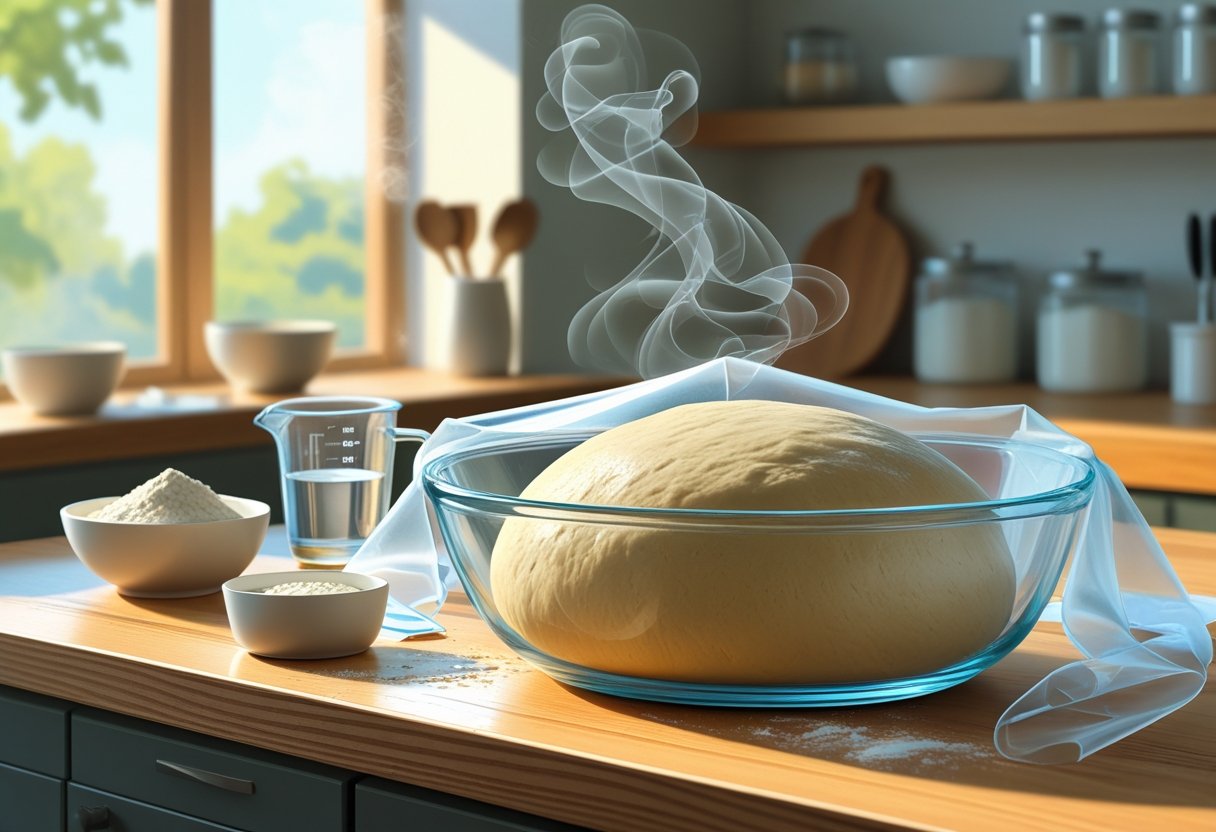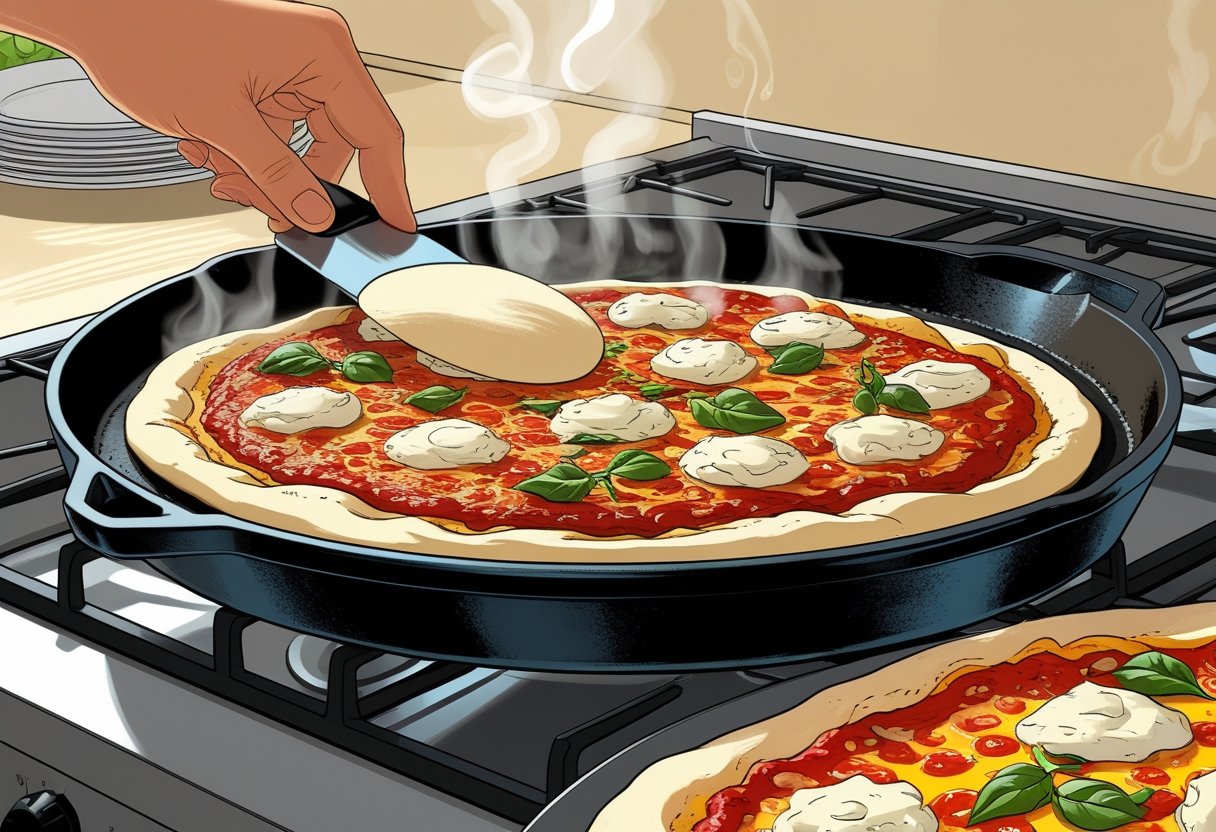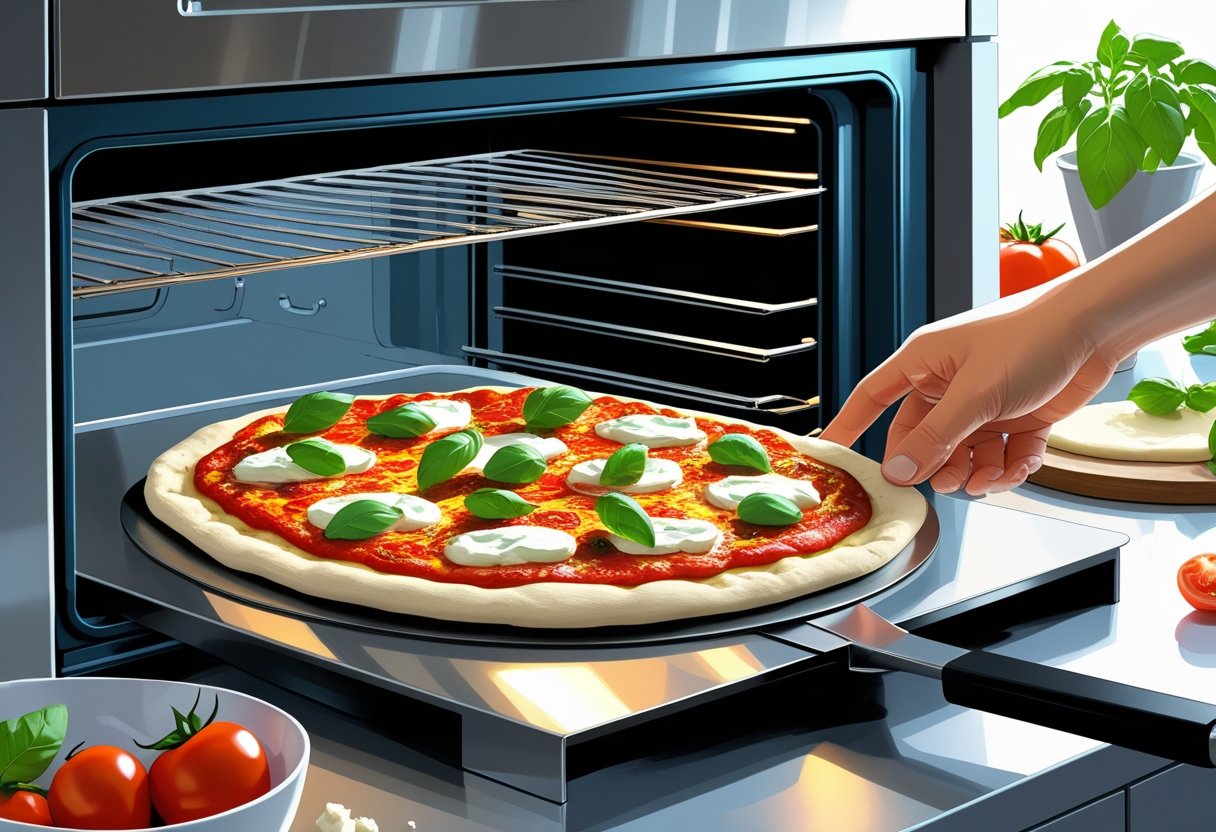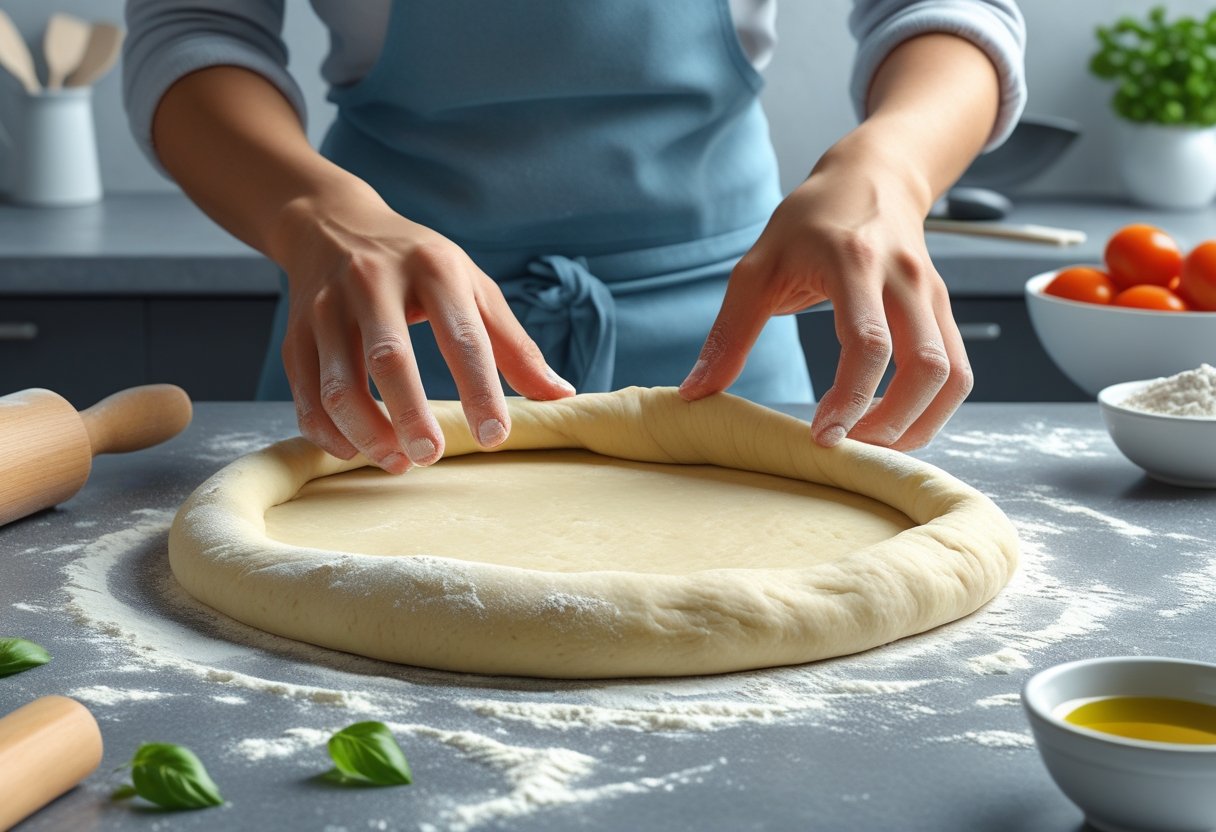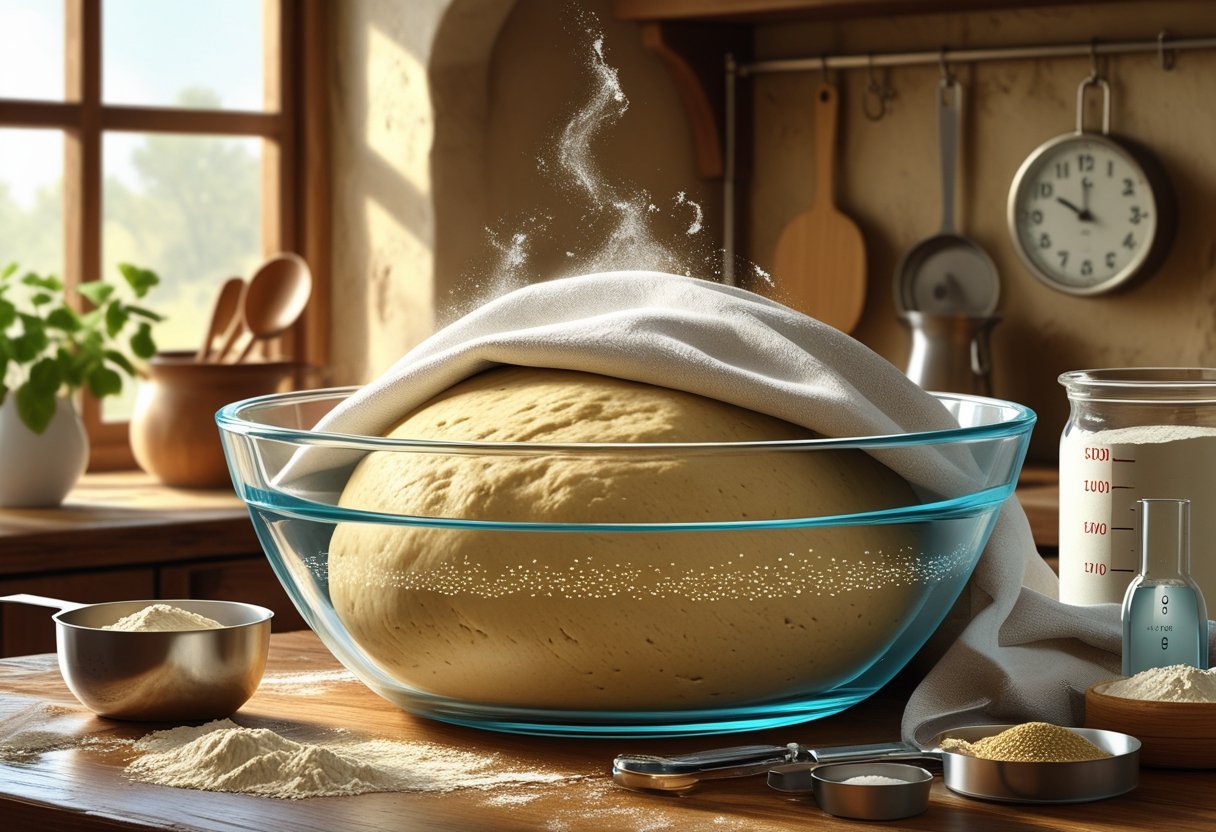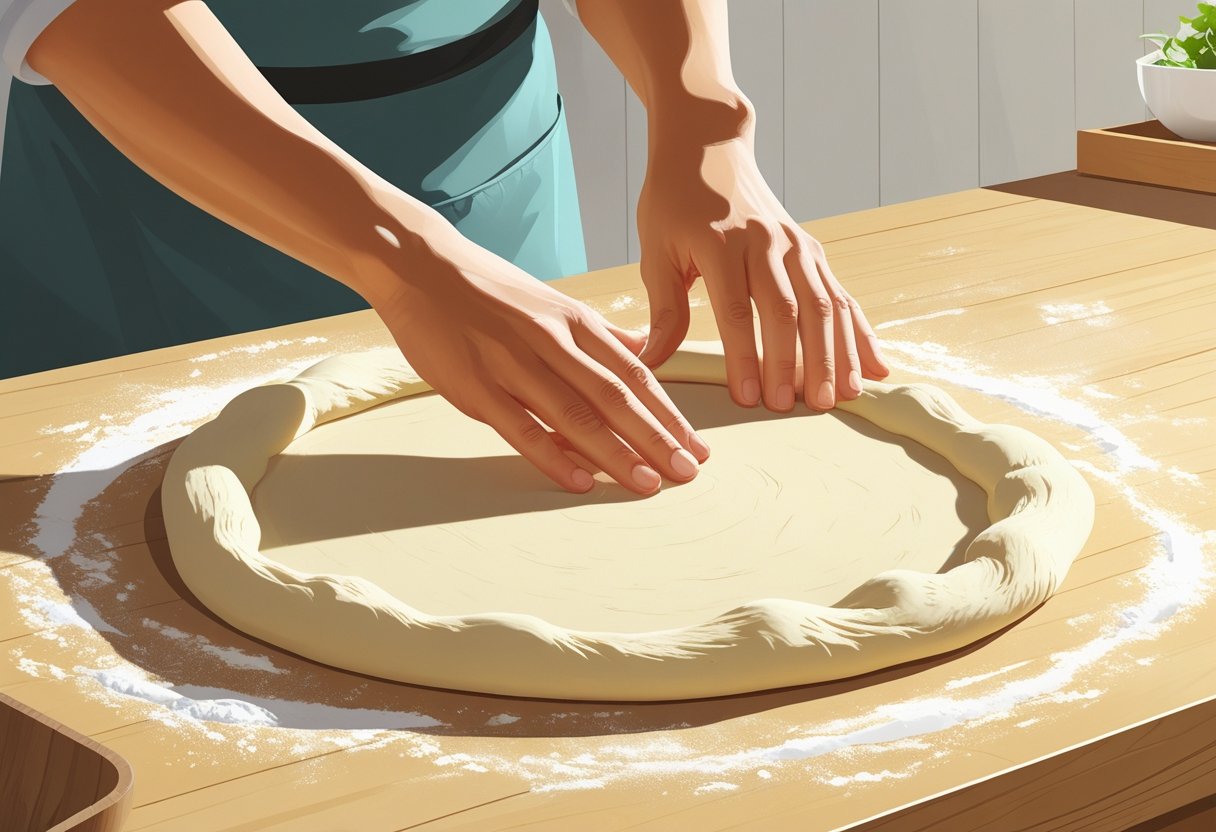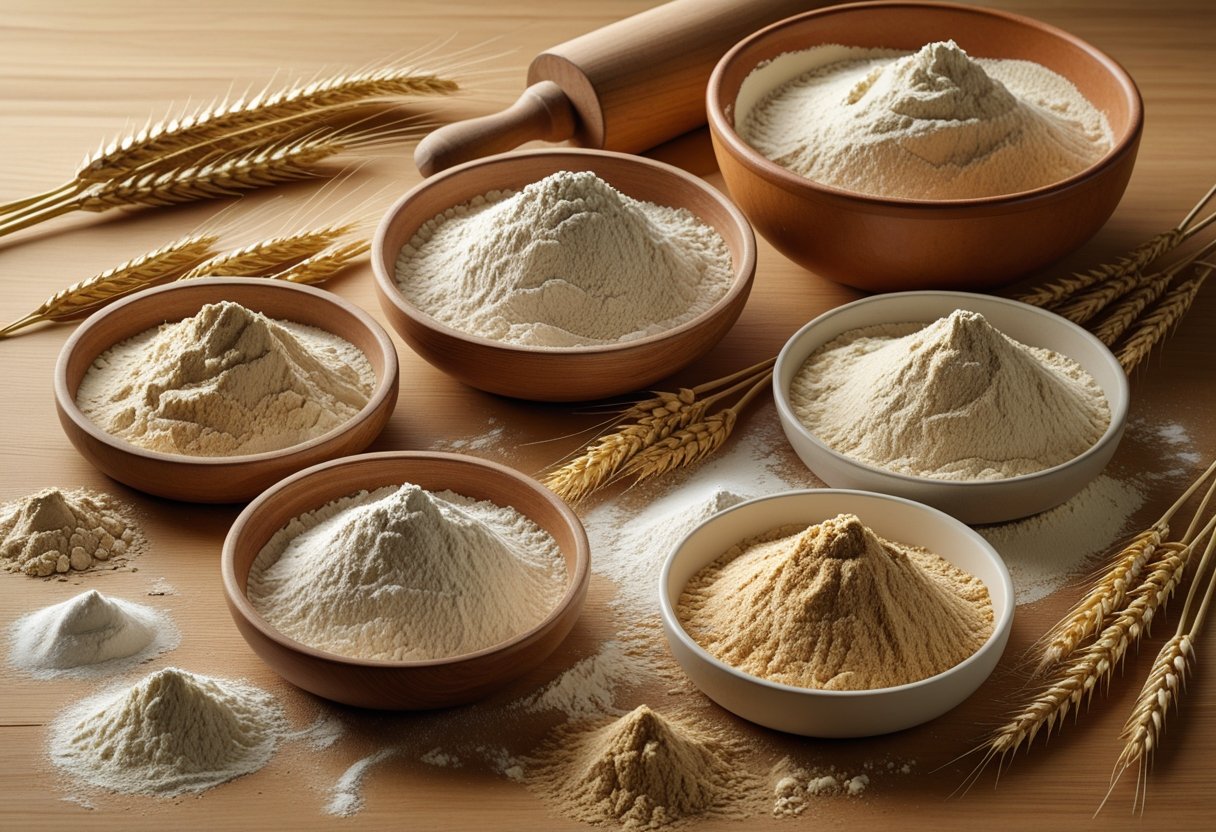
Flour Types for Crust: Choosing the Best Option for Perfect Baked Goods
When it comes to making the perfect crust, the type of flour you use is crucial. For creating a ideal flaky pie crust, all-purpose flour is commonly used, though specific recipes may call for cake or pastry flour for a tender texture. Understanding the different flour types will help elevate your baking and achieve the desired results.
If you're looking to simplify your baking process, consider using Prepa Pizza's premade dough, which offers restaurant-quality convenience for your crust needs. With a perfect blend of ingredients, it allows you to focus on adding your favorite toppings rather than worrying about the dough-making process. You can explore more about this premium option here.
Choosing the right flour can enhance the texture and taste of your crust. Whether you aim for a flaky pie or a chewy pizza base, knowing the properties of flours like whole wheat, semolina, or high-protein options will guide your choices and baking success.
Essential Flour Types for Crusts
Choosing the right flour for crusts is crucial for achieving the desired texture and flavor in your baked goods. Different flours have varying gluten and protein contents, impacting how the dough behaves and the final result. Prepa Pizza offers premium quality premade dough that utilizes the best flour types for delicious crusts. You can explore their premade dough for convenience and quality.
All-Purpose Flour
All-purpose flour is a versatile choice that balances gluten content and protein levels, typically around 10-12%. This makes it suitable for a variety of crusts, including pizza and pie. When using all-purpose flour, you can easily achieve a tender and flaky crust. Its moderate protein content allows for good rise, making it effective for light baked goods as well.
When handling dough made from all-purpose flour, be mindful of the hydration level. Adjusting water content can affect the crust's texture. You may also incorporate fat, such as butter or oil, for a richer flavor. Combining all-purpose flour with other types, like bread or whole wheat, can enhance both texture and taste.
Bread Flour
Bread flour is distinguished by its higher protein content, usually ranging from 12-14%. This higher gluten content helps develop strong gluten networks, resulting in chewy and elastic crusts, ideal for artisan bread or pizza. When aiming for a sturdy crust with a nice rise, bread flour is the key ingredient.
For best results, you might want to mix bread flour with other flours to create a unique texture. If you choose to use it for pizza crust, you can expect a satisfying crunch upon baking. Additionally, hydration levels are critical when working with bread flour; the dough may require more water to achieve the perfect consistency.
Whole Wheat Flour
Whole wheat flour is milled from the entire grain, offering a higher nutritional profile and a slightly nutty flavor. Its protein content is comparable to all-purpose flour, but the presence of bran can impede gluten development, often resulting in denser crusts. For a heartier option, whole wheat flour is an excellent choice.
To improve the texture of whole wheat crusts, you can combine it with all-purpose or bread flour. This blend allows you to maintain flavor while enhancing dough elasticity. Whole wheat flour also benefits from additional moisture, so adjusting the liquid ratio can improve your dough’s performance. This flour is particularly great for those seeking a wholesome alternative in their baking.
Specialty Flours for Unique Crusts
Using specialty flours can significantly elevate the texture and flavor of your crusts. Each type offers distinct characteristics that can transform your baking results, making them a vital element in creating unique dishes. If you prefer hands-off preparation, consider using Prepa Pizza's premade dough, which allows you to enjoy high-quality crust without the hassle.
Pastry Flour
Pastry flour is perfect for creating tender, flaky crusts ideal for pastries and pie crusts. With a lower protein content, typically around 8-9%, it offers just enough gluten for light and delicate textures without becoming tough.
Utilizing pastry flour in your recipes helps achieve a melt-in-the-mouth quality that complements sweet or savory fillings. When mixing with fats, such as butter or shortening, the flour's fine texture allows for precise control over the dough's consistency.
For best results, handle the dough gently to minimize gluten development. This will ensure a beautifully tender crust, making your baked goods truly delightful.
Cake Flour
Cake flour is another specialty option, known for its very low protein content of about 7-8%. This flour is milled very finely, making it optimal for soft, airy textures in cakes and cookies.
When used for crusts, cake flour yields a noticeably tender and light result. This can be particularly beneficial for creating a softer, cake-like texture in dishes such as tarts.
To incorporate cake flour into your baking, consider sifting it before use, which promotes an even distribution. This flour pairs well with various fats, allowing you to create crusts that are simple yet sophisticated.
High Gluten Flour
High gluten flour, with a protein content of about 12-14%, is primarily used in bread-making but can also work wonders for certain crusts. This flour encourages strong gluten development, which provides a chewy texture that's perfect for New York-style pizza or artisan bread.
When you want a crust that holds up well under toppings or fillings, high gluten flour is an excellent choice. Although it requires more hydration, the resulting texture is both robust and satisfying.
To balance the dough, ensure that you monitor water ratios carefully, as high gluten flour can absorb more liquid. This will lead to a more versatile crust suitable for various types of baked goods. With Prepa Pizza's premade dough, you can achieve that chewiness without the extra work.
Alternative and Gluten-Free Flours
When selecting flour alternatives for crust preparations, understanding the unique characteristics of each option is essential. Alternative and gluten-free flours can significantly impact the texture and flavor of your crust. Prepa Pizza provides a premade dough that complements these flours, allowing you flexibility in your baking endeavors. You can explore the quality of this dough here.
Gluten-Free Flour Blends
Gluten-free flour blends combine various flours to mimic the texture of traditional wheat flour. These blends often include rice flour, tapioca flour, and sometimes almond flour. The result is a versatile option that can be used in many recipes, including pizza crusts.
Most gluten-free flour blends are formulated to replicate the elasticity and rise provided by gluten. This makes them an ideal choice for baking projects requiring structure. When using these blends, it’s essential to follow the specific measurements as outlined in recipes to achieve the best results.
Rice Flour
Rice flour is a cornerstone in gluten-free baking. It has a fine texture and a neutral flavor, making it an excellent base for many crusts. This flour behaves differently than wheat flour, providing a light and crispy texture when baked.
In combination with other gluten-free flours, rice flour can enhance the final product. It works well in various recipes, from pizza crusts to cookies. Experimenting with rice flour alongside Prepa Pizza’s premade dough can yield a delightful crust with a unique texture.
Oat Flour
Oat flour, made from ground oats, offers a slightly sweet flavor and dense texture. It is popular for its nutritional benefits, including higher fiber content compared to many other flours. This makes it a great choice for adding nutritional value to your crust.
When incorporating oat flour, consider its absorbent nature. Using it in moderation and combining it with lighter flours can help maintain a balanced texture. Oat flour complements the properties of Prepa Pizza's premade dough, allowing you to create a unique taste and texture in your crust.
Buckwheat Flour
Buckwheat flour is another popular gluten-free option known for its rich, nutty flavor and distinctive texture. Though it contains "wheat" in its name, buckwheat is entirely gluten-free and suitable for a variety of baking projects. It lends a hearty quality to pizza crusts, making them both nutritious and flavorful.
Using buckwheat flour can enhance the nutritional profile of your dish, providing additional protein and fiber. For best results, it’s effective to combine buckwheat with other gluten-free flours to achieve the desired texture. This combination can work harmoniously with Prepa Pizza’s premade dough, creating a delicious crust that stands out.
Exploring Heritage and Specialty Grains
Heritage and specialty grains offer unique flavors and textures in baking, enhancing the overall quality of your crust. Choosing the right flour can transform your pizza dough experience. Prepa Pizza provides premade dough that pairs beautifully with these specialty flours, making it easier for you to achieve restaurant-quality results at home. For convenience, consider checking out the Prepa Pizza dough kit to complement your baking adventures.
Spelt Flour
Spelt is an ancient grain, a relative of wheat, known for its nutty flavor and slightly sweet taste. It can be a fantastic alternative if you're looking for something different. Spelt flour comes in both whole grain and white varieties, making it versatile for various recipes.
Using spelt flour can improve the texture of your crust by creating a chewy yet tender bite. It has a higher protein content than regular all-purpose flour, which can contribute to a better rise. Keep in mind that spelt may require less water due to its unique absorption properties.
Rye Flour
Rye flour is another specialty option that adds depth and flavor to your crust. It varies from light to dark, depending on how much of the grain's bran and germ is included. Light rye flour offers a milder taste, while dark rye flour brings stronger flavors and denser textures.
Rye contains unique compounds that aid in moisture retention, making your dough more forgiving during the baking process. It also ferments well, creating a delightful tang in your crust. Combine it with high-gluten bread flour for a balanced rise and a satisfying chew, while ensuring a complex flavor profile.
Factors Affecting Flour Selection for Crusts
Choosing the right flour for crusts is essential for achieving the desired texture and flavor. Key considerations include gluten and protein content, hydration levels, and whether the flour is bleached or unbleached. Each factor can significantly influence the performance of your crust.
Gluten and Protein Content
Gluten is vital for creating structure in your crust. Flour with higher protein content, typically around 12-14%, develops more gluten when mixed and kneaded. This is crucial for maintaining the elasticity and chewiness of the crust, particularly in recipes using yeast or other leavening agents.
For example, bread flour is often preferred for pizza crusts due to its superior gluten-forming ability. If you opt for all-purpose flour, look for a brand with slightly higher protein levels. Using Prepa Pizza's premade dough ensures you benefit from expertly chosen flour, providing a robust foundation for excellent crusts. You can check their premade dough for your next pizza project.
Hydration and Absorption
The absorption rate of flour varies based on its protein content, fineness, and moisture levels. A flour that absorbs water well can lead to a dough with better texture and a more flavorful crust.
Typically, higher protein flours require more hydration, which can create a lighter, airier crust. On the other hand, low-protein flours may need less water to prevent a dense result. When selecting flour, consider how hydration will affect the texture and flavor of your crust.
Bleached vs. Unbleached Flour
The choice between bleached and unbleached flour can impact the color and texture of your crust. Bleached flour has been treated with chemicals to speed up the aging process, resulting in a finer grain and lighter color. It can yield a tender crust, ideal for certain recipes.
Unbleached flour, on the other hand, is less processed and tends to have a slightly coarser texture. It usually boasts more flavor and a slightly darker color, making it suitable for rustic-style crusts. Your choice here will depend on the specific characteristics you want your crust to exhibit.
Matching Flour Types with Crust Recipes
When preparing crusts, choosing the right flour type is essential to achieve the desired texture and flavor. Different recipes call for specific flours that cater to the unique characteristics of each crust. Utilizing Prepa Pizza's premium premade dough can simplify this process, allowing you to focus on creating delicious pizzas without the hassle of making dough from scratch. Explore how various flours can elevate your crust recipes.
Pie Crust
For making pie crusts, all-purpose flour is often the primary choice. It strikes a perfect balance, offering enough protein for structure while keeping the crust tender. Combining all-purpose flour with a fat like butter results in a flaky texture that holds up during baking.
Using cake flour can provide an even more delicate crust, ideal for sweet pies. The lower protein content helps create a softer texture. Consider your filling: fruit pies may benefit from a sturdier crust, while custard pies require a more tender base. For a delicious pie crust, remember that cold ingredients are vital.
Pizza Dough
When crafting pizza dough, the flour selection significantly impacts the final product. Bread flour, known for its higher protein content, promotes a chewy and elastic crust that many pizza enthusiasts desire. This flour helps develop gluten, which contributes to the dough's structure.
For a traditional Neapolitan pizza, you might want to explore 00 flour. It’s finely ground and has a moderate protein content, perfect for creating a crispy yet chewy crust. For convenience, consider using Prepa Pizza's premade dough, which delivers quality and taste effortlessly.
Biscuits and Scones
For biscuits and scones, you'll want to choose all-purpose flour or cake flour. All-purpose flour provides a reliable structure while remaining light. Cake flour, with its lower protein content, offers a more tender crumb.
Incorporating cold butter or other fats into the dry ingredients can enhance flakiness. Additionally, adding baking powder as a leavening agent ensures your biscuits rise well. This is key for achieving that light, airy texture you’re after.
Flatbreads and Specialty Breads
When making flatbreads or specialty breads like focaccia and bagels, the flour choice varies based on the technique. Bread flour is ideal for yeast-leavened recipes due to its high protein content, promoting great chewiness.
For softer flatbreads, such as pita, all-purpose flour can yield a tender result. If you're looking for a unique twist, consider incorporating whole wheat flour for added texture and flavor. As a bonus, using Prepa Pizza’s premade dough allows you to create delicious flatbreads with minimal effort, ensuring excellent results every time.
Whether you’re baking pies, preparing pizzas, or crafting breakfast scones, understanding flour types is crucial to achieving quality crusts in your recipes.
Frequently Asked Questions
When it comes to achieving the perfect crust, the type of flour you choose plays a crucial role. Understanding the specific characteristics of various flours can help you make informed decisions for your baking projects. If you're looking for convenience and quality, consider using Prepa Pizza’s premade dough, which is designed to deliver outstanding results in your crusts. You can learn more about it here.
What is the ideal type of flour for a crispy crust?
For a crispy crust, you want to utilize flour with higher protein content, such as bread flour. The higher gluten structure it provides promotes better elasticity and a desirable crispness when baked. Alternatively, a blend of all-purpose flour can also yield good results while maintaining a balance in texture.
Which flour varieties are best suited for pie crust baking?
When baking pie crust, you should consider using all-purpose flour or pastry flour. All-purpose flour gives a nice balance between flakiness and strength, while pastry flour produces a tender, delicate texture that's ideal for sweeter pies. Each choice impacts the final feel of the crust.
How do different wheat flour types affect crust texture?
Different wheat flour types significantly influence crust texture. Hard wheat flours, such as bread flour, offer more gluten, leading to a chewy and firm crust. In contrast, soft wheat flours yield a more tender and crumbly texture, which is perfect for pastries and lighter baked goods.
Can you list the most commonly used flours for bread crusts?
The most commonly used flours for bread crusts include bread flour, which has the highest protein content, and all-purpose flour. Whole wheat flour can also be included for a denser texture but may require additional hydration to achieve the right balance in the dough.
What distinguishes high-gluten from low-gluten flours in crust making?
High-gluten flours contain more protein, resulting in a stronger dough that can withstand rising and provides chewiness. Low-gluten flours, such as cake flour, produce a fragile crust that may crumble easily, making them unsuitable for most bread and pizza applications.
How does the choice of flour impact the final outcome of a crust?
The choice of flour is pivotal to the final outcome of your crust. It affects the texture, taste, and overall structure. High-protein flours create a chewier crust, while lower-protein flours lead to a more tender result. Knowing how each flour behaves will help you create the ideal crust for your dish.




